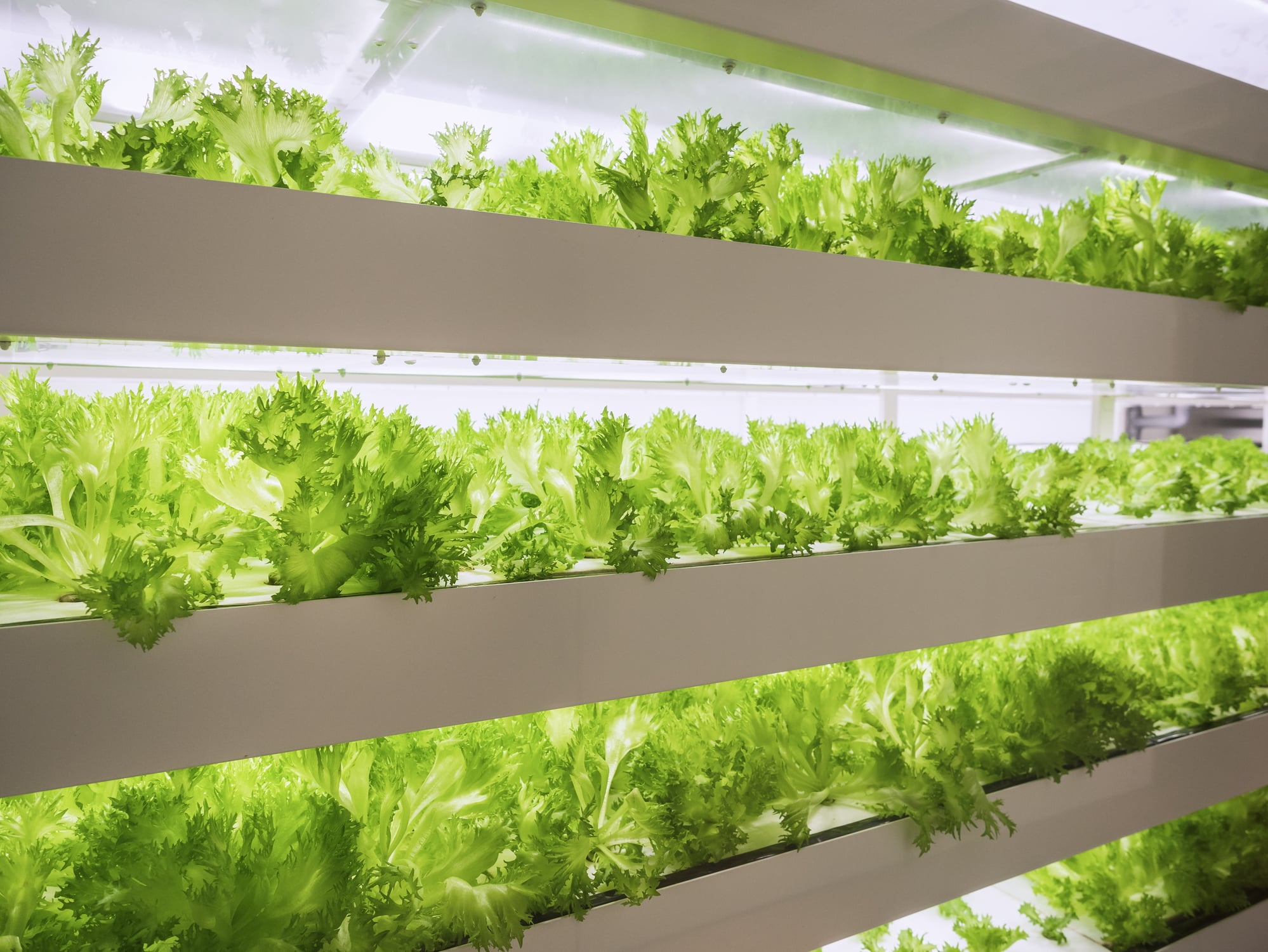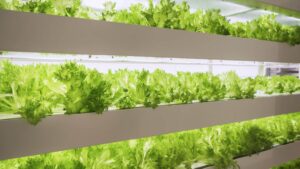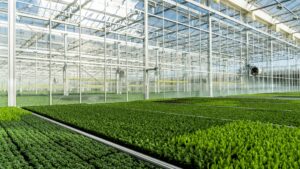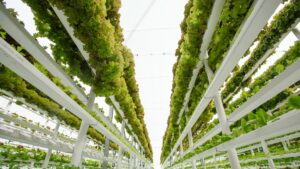With roots dating back to 1951 in Armenia, indoor agriculture isn’t a necessarily a new industry, but it’s an industry attempting to scale up production to new levels. While indoor agriculture might not be the one-size-fits-all solution to feeding the increasing global population by 2050, it’s going to be a big support to conventional agriculture.
In fact, by 2027, the global vertical farming industry should reach $1.38 billion, according to Allied Market Research, with a CAGR of 26.2% from 2021 to 2027.
In order to scale up production, the sector needs access to elite germplasm vegetable lines. And when it comes down to it, the germplasm you need for indoor agriculture is going to be different germplasm than you’d want for conventional vegetable breeding, says John Purcell, founding CEO of Unfold.
With an exclusive license from Bayer, Purcell says Unfold is the entity that can use some of Bayer’s germplasm in their breeding programs to create better varieties for vertical and indoor farming practices.
“They’re getting to a point where everyone is basically just buying seed from whomever — and almost all of that is designed for developed for open field,” Purcell says. “None of it was actually developed specifically for vertical, but that’s where our premise comes in.”
With access to better germplasm, Purcell says Unfold’s goal is to create seed varieties that can become solutions to vertical and indoor farming. He believes that’s the first step to upping the game for vertical farming.
Breeding Focuses Change Indoors
When creating seed for indoor use, there’s some different steps you must take. For one, changing your mindset is important. Instead of focusing on issues you’d have to tackle in a conventional field, Purcell says you need to learn about the intricacies of farming in an indoor setting.
Outdoors, your focus will be on environmental effects, swings in temperature, moisture and more, because those conditions have an impact on the crop and the crop’s resiliency, and are factors out of one’s control.

“One of the great things about vertical farming is you have incredible management tools to control that environment,” he says. “You can set the temperature, set the humidity — even the lighting regime. When you can control that environment, you can optimize the genetics to perform better.”
Instead of the disease, pest and abiotic stressors, Purcell says you focus on challenges the genetics might face — what’s the uniformity, how’s the quality, how’s the taste and color?
“They still have to yield well and be competitive, but you’re also looking at how to provide a high-quality experience from the consumer perspective,” he says.
No matter how good your control system may be, challenges can still arise. Purcell says there are always things you can never eliminate.
“You’re starting to see more discussions about integrated pest management (IPM), about tools you can use and the advantages you have indoors,” he says. “There’s a lot of cool biologicals to control pests and diseases — and you can really make a nice pest or disease management system indoors.”
In addition to more strategies being implemented, like IPM, Purcell sees the opportunity for indoor agriculture to take advantage of the digitization of agriculture.
“I describe it as Silicon Valley meets Salinas Valley — there’s incredible tools to manage your crop using digital means,” he says. “They allow you to assess how the crop is performing with cameras, probes and drones. When you move indoors, you have an opportunity to take full advantage of all those digital crop management tools and assessment tools.”
Collaborations through mechanization, automation and data will not only help better production, but optimize genetics. But, the key is the focus on collaboration.
“When you collaborate, you get the best solutions,” he says. “The innovations are going to come from the confluence of genetic with digital and engineering. When they come together, they’ll bring the solutions vertical farming needs.”
Scaling Up to Feed the Globe
With indoor agriculture coming into the spotlight more, Purcell says that though it might not be adapted to feed the world by itself currently, it’s the next evolution of the produce world.
As an example, many open field crops have already made the move into more greenhouses — from a simple net house to a more controlled environment. The next step seems easy to imagine: a completely controlled environment.
“This move towards a controlled environment has already been happening for years,” Purcell says. “Indoors is sort of the next permutation in the technology ladder. For certain crops, indoor agriculture is going to play a major role in production.”
That doesn’t mean, though, that greenhouses or open fields will disappear.
“We need it all,” he says. “With a growing population and pressures on our supply chains, you need every piece — everybody has got to be working together to provide solutions we need. Our goal is to help everyone expand fresh produce’s share of plate.”
Want to read more? Check out:
Scaling Up Indoor Ag? Make Sure You Prepare
Indoor Ag has Untapped Potential to Feed the World













